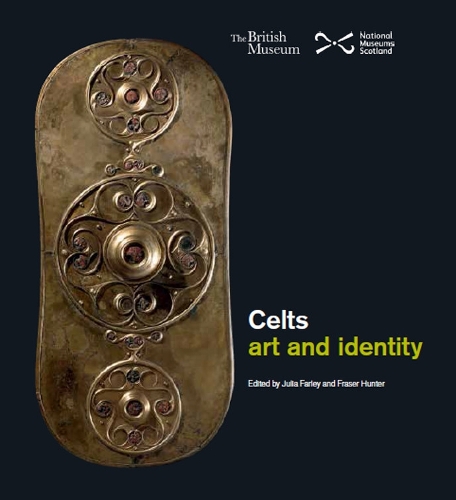
Celts: Art and Identity
(Paperback)
Publishing Details
Celts: Art and Identity
By (Author) Julia Farley
By (author) Fraser Hunter
British Museum Press
British Museum Press
1st December 2015
United Kingdom
Classifications
General
Non Fiction
Social and cultural history
936.4
Physical Properties
Paperback
304
Width 220mm, Height 250mm
1330g
Description
The real and imagined legacy of the ancient Celts has shaped modern identities across the British Isles and retains a powerful hold over the popular imagination. Furthermore, Celtic art is one of Europe's great artistic traditions, with the skills of Celtic craftspeople standing alongside the best of the ancient and medieval worlds. But who were the Celts Recent research and new archaeological discoveries are continuing to transform our understanding of the idea of the Celts - a subject involving much controversy and academic debate since the late 1990s. Drawing on the latest scholarship, the authors explore how the Celts have been defined differently from ancient times to the modern day, by people with different perspectives and agendas. They look, too, at what is meant by Celtic art, from its origins c.500 BC in western Europe, through its transformations and revivals in the Roman, Anglo-Saxon and medieval periods, to its rediscovery in Britain in the eighteenth and nineteenth centuries. Over 250 remarkable objects have been selected from the collections of the British Museum, the National Museums of Scotland and other key European museums to richly illustrate the narrative and highlight the artistic accomplishments of craftspeople through the centuries. Here are iconic, intricately decorated masterpieces as well as less well-known fixtures and fittings; items of warfare and adornment; the ceremonial and the utilitarian.
Author Bio
Julia Farley is a curator at the British Museum. She was responsible for the European Iron Age collections from 2014 to 2021, and now works as the Lead Curator on the Reimagining the British Museum project. She has curated a number of exhibitions, including Celts: art and identity (2015-16), organised in partnership between the British Museum and National Museums Scotland. Julia also held a Leverhulme Early Career Fellowship at the University of Leicester, looking at the circulation of gold and silver. Her work explores craft, making and materials, and the colonial encounter between communities in Iron Age Britain and the Roman world.
